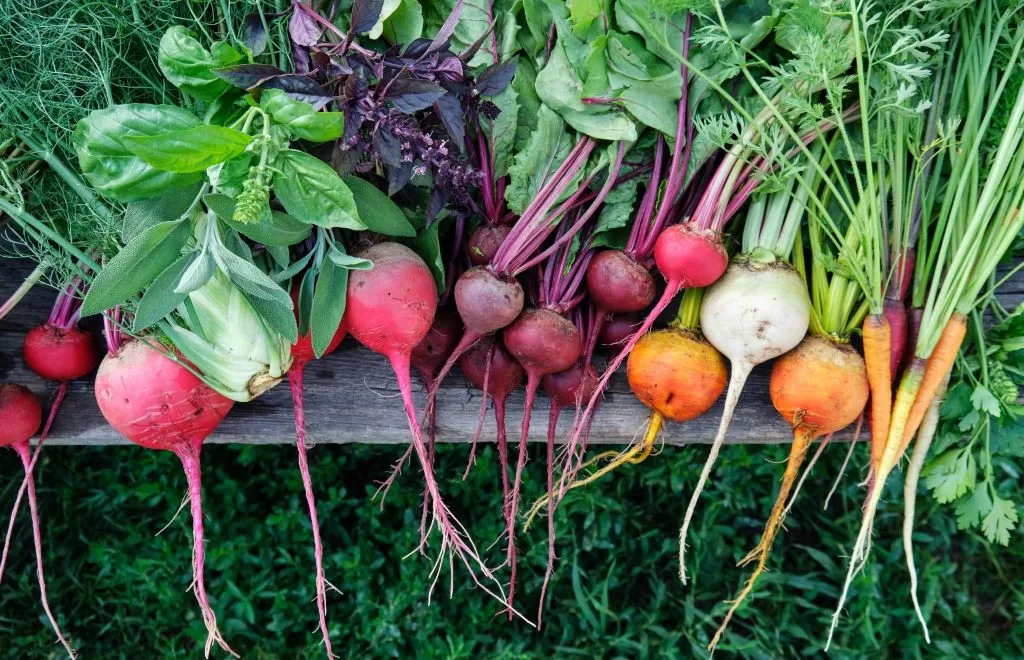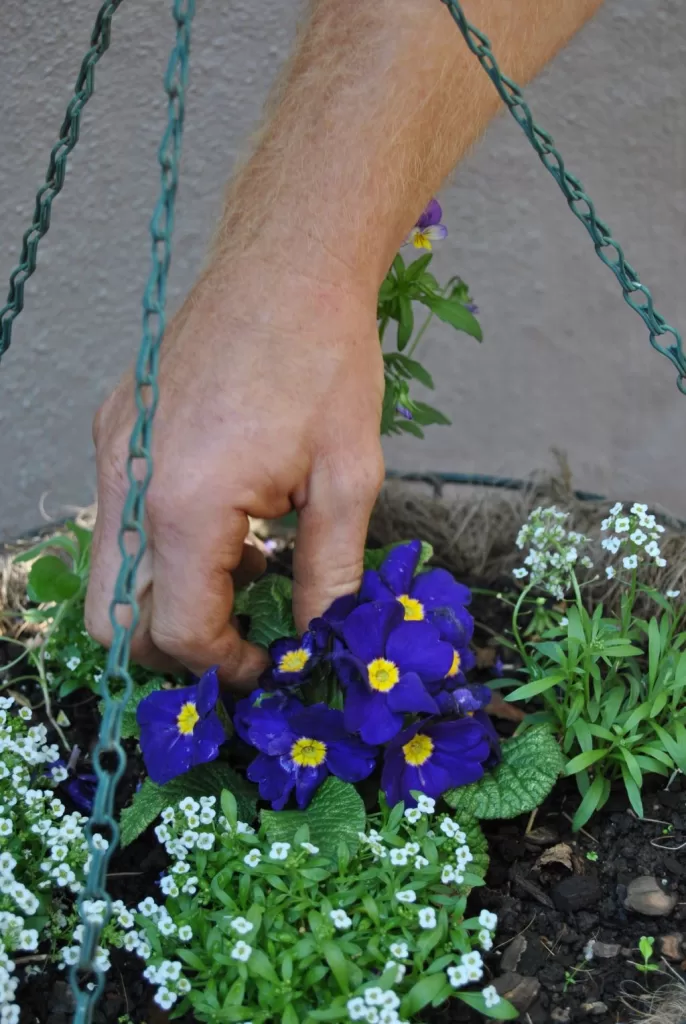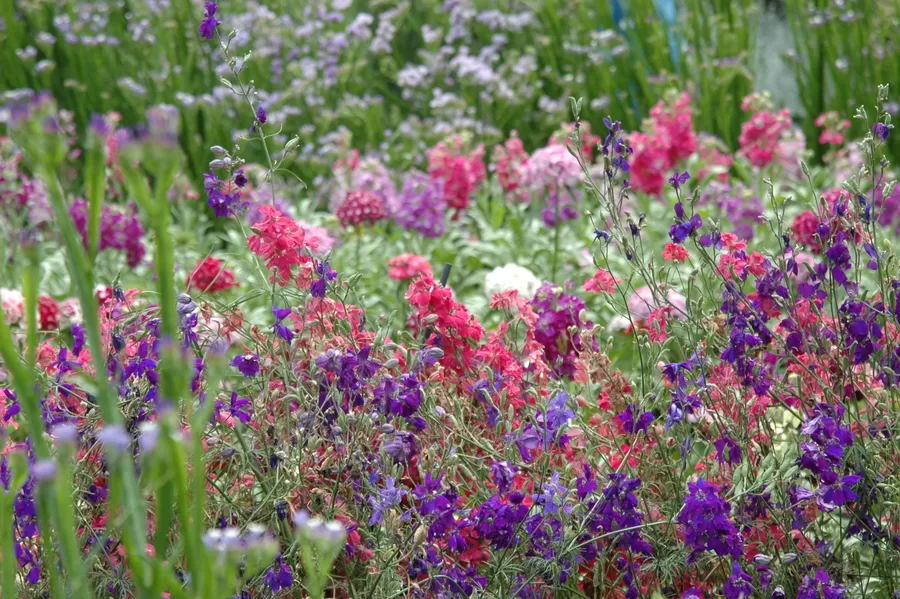Spring’s blooming miracles
Spring is a time when many folk plan a road trip to see the beautiful
wildflowers (and other flora) bloom across South Africa.

In the heart of the Kwa-Zulu Natal Midlands is award winning Granny Mouse Country House & Spa, the perfect combination of relaxation and luxury. Known for its beautiful gardens and fabulous food, Granny Mouse often inspires guests to begin transforming their own gardens.
“Our ethos of being a home-away-from-home, and our heritage spanning 40 years, plays a large part in that” says General Manager, Sean Granger.

“We have some tips, and some tasks to set yourselves as we head out of winter”, says Sean.
Your top flower priority is to fill sun-drenched spaces with
indigenous gazanias which are in flower and available in seedling
trays all over now. New hybrids of these spectacular plants appear
every year, sporting huge flowers in stunning colour ranges. Add more colour with lots of daisy bushes, osteospermum, felicia, arctotis, and nemesia. But remember that the face of spring definitely includes the beautiful clivia for shady spots.

Also don’t forget to plant these seedlings now, for a burst of colour:
Coleus – These are grown for their foliage which is available in many different colours and bi-colours, and brighten up any dull, shady area. They can also be grown indoors or can make a good replacement for Impatiens. Best suited in shade to semi-shade, but some of the new types are bred for the sun. They range in height from 25cm to 45cm depending on the variety.
Dahlias – This is really an old favourite. Dahlias are tough, full-sun
plants that are available in a wide range of colours, with large
daisy-like flowers on bushy plants. They come in different heights,
depending on the variety. Keep a look out for the Harlequins, which
are a spectacular bi-colour type.
Petunias – These are one of the most popular bedding plants and are available in a multitude of colours and bi-colours, even black. There are 4 types of Petunias: miniflora (very small flowers), midiflora (small flowers but many), multiflora (medium sized flowers but many), and grandiflora (large, but fewer flowers). They differ in habit from upright, to semi-cascading, to full cascading. Fun fact: the flowers are edible too.
Begonias – A bedding plant favourite. Masses of small flowers on
upright bushes with colours from white, to pink, to red, with leaves
in either green or bronze. They need to be planted in semi-shade. The bronze leaf type can be planted in the sun, as long as there is enough ater provided.
Alyssum (Lobularia) – sweetly scented flowers on low spreading plants. Great as an edging plant. Plant these in sun to semi-shade. Available in white, pinks, and purples.
Start sowing asters, celosias, cosmos, marigolds, nasturtiums,
salvias, sunflowers, vincas and zinnias. You will be amazed at the eye candy value which hides in a cheap seed packet.
You are not yet done with bulb-planting. Start planting coloured
Zantedeschia hybrids and dahlias.
Veggies: Sow artichokes (Globe), bush beans, climbing beans, beetroot, eggplant, cabbages, carrots, celery, chillies, cucumbers, sweet peppers, lettuce, corn, (sweet corn), melon (sweet and watermelon), peas, pumpkin, radishes, rhubarb, spinach (Swiss chard), squash, and tomatoes. Also do more sowings of salad greens and herbs like watercress, rocket, coriander, baby spinach and mustard.
Fruit: As soon as about 80% of the blossoms on fruit trees have
dropped, you should start spraying against fruit flies. Spray stone
fruit trees to protect them from leaf curl disease – your nearest
garden centre will have the right product. If you do not own any fruit trees, your nearest plant stockist will come to your rescue – all
plantsmen will have large stocks of fruit trees now.
Trending: Berries of all kinds are good for your health and different
varieties are readily available. To ensure a good crop of berries,
prepare beds by working soil over with a fork and add compost and a balanced fertiliser for fruits and flowers, prior to planting. Start
planting young strawberry plants too.
Feeding: All fruit trees must be fed with a balanced fertiliser this
month. Also feed young veggie seedlings regularly with a water-soluble growth stimulant to make them strong.
More Fertilising: Keep on feeding spring bulbs with bulb food to boost flowering again in another season. Apply a water-soluble plant food to flower borders, pots and containers regularly. Feed azaleas as they finish blooming with an acid loving water-soluble plant food. Add a rose and flower fertiliser to roses and shrub beds. This will give them a welcome boost for the upcoming season. In fact, everything in a garden or pot should be fed this month.
Pretty trees for birds and bees: Remember, trees clean the air and
provide us with oxygen. There are a multitude of indigenous trees
available. Two to look out for are:
Kiggelaria africana (wild peach) branches out wide and low, supply
deep shade and forms a dense neat crown. This is a handy indigenous tree to use as screening or to protect a garden against wind.
Dombeya rotundifolia (wild pear) is always the harbinger of spring
when its bare branches are covered in sweet smelling, white blossoms.
A fast-growing and hardy little indigenous tree for small gardens
across the country.
Keep snails in check – they have the potential to decimate young
growth overnight. Emerging perennials like hostas are especially
vulnerable.
Weed regularly before it gets out of hand. Treat weeds on paving,
pathways and in gravelled areas with a broad spectrum weed killer.
Spray roses with a 3-in-1 product to control black spot, mildew and aphids.
Lawns: Train your lawn to be water wise, by watering it well only once a week – this will encourage deeper root growth. Also, never cut your lawn too short as this keeps the roots near the surface where they are more likely to dry out. For new lawns, start preparing the ground with compost and bone meal, before sowing seeds or laying instant turf. If weeds are a problem in large lawn areas, treat them with a broadleaf herbicide. For smaller lawn areas, use a ready-to-use broadleaf herbicide.
Western Cape
Herbal greys: Some of the best herbs have silver, grey, or greyish
green leaves which makes them handy to add contrast colour in the
veggie and flower garden. These herbs mostly have a strong flavour for cooking and are also able to repel pests efficiently. Plant these
cooling beauties now: lavender, santolina, curry plant, artichoke,
sage and lamb’s ear.
Gauteng
A perfect tree to plant is Magnolia x soulangeana (saucer Magnolia).
It is a deciduous tree, about 6m x 6m in size. Out of the gnarled main stem sprouts many side branches which produce the most awesome tulip-shaped flowers in shades of pink, dark pink, lilac and white from late winter to spring. (The flower colour will depend on the variety you plant). From afar, these large flowers which bloom in abundance on the tree, create the illusion that a great swarm of
exotic birds came to visit the garden. Light green leathery leaves
only appear when the flowering period is over. The little tree’s
summer canopy does not cast deep shade, which allows the gardener to plant lots of annuals, perennials and small shrubs beneath it. A perfect tree for a small or cottage style garden. Easy to grow, but slow to grow up.
Seedlings, colour bags and herbs with lots of colour and which are
dynamic for your spring garden are readily available at nurseries.
If you have not yet fed your garden then this is the perfect time to
feed existing trees, shrubs, annuals, seedlings and vegetables.
KwaZulu-Natal
Gardeners lucky to live in the warmer areas of this province should
remember to plant Petrea volubilis (purple wreath), a semi-evergreen shrub or creeper which produces sprays of violet blue flowers in spring.
Sow corn and sweet corn directly and in rows in a sunny spot of the
veggie garden. Keep the rows 60 – 90cm apart and space the small
planting holes about 3 – 5cm deep and about 30 – 35cm apart. Plant twos eeds in each hole in case some do not germinate. Once growing, you can interplant the rows with other veggies like squashes, kidney beans and salad crops, to save space.
Free State
Plant seed potatoes in spring. There are different ways of doing this, such as planting them in bags, old tyres, deep drums or any container deep enough, which can be topped up with soil as they grow. The traditional way is in trenches of about 10 to 12cm deep, which are filled and earthed up while the tubers are growing.
North West
When the monkey thorns (Senegalia galpinii) start blooming in this
region, one knows that spring has arrived in all its glory. This
fast-growing thorn tree grows into a large specimen, has a big root
system, and is therefore only suited to large gardens, but is
definitely worth planting for its honey-scented cream to yellow
flowers.
Fun to do: Pot up hanging baskets with summer colour like
pelargoniums, cascading petunias and the new basket lobelias. Also
remember that one can grow quite a large selection of herbs and sweet strawberries in hanging baskets. To keep them from drying out too quickly, add a water retention product to the potting soil before planting.
Northern Cape
Bulk mulching protects plant roots against the heat and fast water
loss. Spend all your energy and resources to cover your whole garden with mulch, as it might still be a while before the rain arrives. As the days become longer, temperatures rise, and plants become stressed.
This stress can be decreased by a layer of mulch. When rain arrives at last, the mulch will keep the soil moist for much longer. Materials to use include coarse compost, composted bark, leaf mould, pine needles, straw, peanut or other nut shells, peach pips, shavings, pebbles and stones.
Eastern Cape
Plan something new for your garden this spring – nurseries are loaded with new releases and great ideas. Favourites include Dipladenias (red, yellow, pink, white), the liquorice scented Agastaches, tuberous begonias with enormous blooms, compact and free flowering basket petunias and the colourful Bergamots.
Plant tropical fruits like bananas and paw paws now.
Mpumalanga
Look out for lobelias as a cascading show of blue to spill over
containers, or even for patio table bowls. The star of the spring
bedding plant colour must be Petunias. They will explode with colour in the hottest and driest spots in the garden and containers. Petuniasd on’t much like overhead water, which is why they do so well this time of the year, when we don’t expect much rain.
Pinch back plants like Fuchsias to encourage them to become bushier.
Remove old, spent winter flowering annuals and replant with more
long-blooming summer annuals like marigolds and dianthus. They like full sun and well composted soil. To keep them blooming (for up to 4 months at a time) deadhead them regularly.
Limpopo
Take fynbos to Limpopo! Nurseries in this region will have beautiful
stock of pincushions, proteas and ericas. Plant them in a sunny spot, in well-drained soil and use acid compost to enrich the soil. Do not add superphosphate.
If your azaleas have finished flowering, some of them may be a little too tall or scraggly. They can now be trimmed, as they will soon bush out and produce even more flowers next spring.
To experience Granny Mouse’s gardens and award-winning excellence, email [email protected]


























